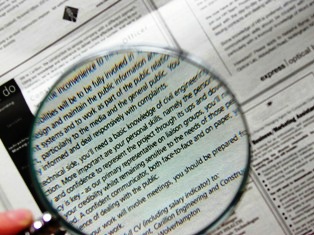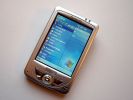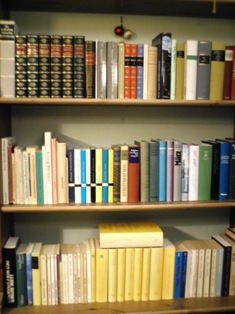The advent of the paperless society?
(continued)
5. Electronic books
|
An electronic book seems easier to read – as one can change the display on the screen – easier to search, and easier to annotate: instead of a narrow margin, the reader could be given limitless space.
However, at the present moment computers are too bulky to handle and hand-held readers too small to read with convenience. One needs to scroll up and down and cannot flick through the pages or see more than a few paragraphs at once, making reading and scanning burdensome.
|
| |

|
| |
"...ebooks are a solution in search of a problem. Print books work. Most readers see no need to replace print books."
Walt Crawford
in EContent,
July/Aug 2006
Reading is a hard job in any medium
Photo: www.freeimages.co.uk
|

From pocket book to pocket library?
Photo: freedigitalphotos.net
|
| | | |
Some obvious advantages of e-books are that they can be:
- published more quickly
- updated more frequently
- borrowed from a library online
- purchased by the library for the user within minutes
- even printed on paper by the publisher on demand.
|
On the other hand, the multiplication of texts means that quality cannot be guaranteed in the same measure as for printed books. The editing for the literary works on Project Gutenberg, for example, is done by volunteers; and an e-publisher presenting 1,500 new titles per week (!) declares that there are no editors in his company, solely commercial intermediaries between authors and readers – which in his view hands the power back to these two groups (Bagnato, 2006).
|
Some more astonishing features of e-books are that they can:
- integrate text and still image with sound and moving image
- pass on annotations of many readers
- make the reader co-author, even with works of fiction.
(For the latter, see the example of a short story at Bolter, 1992, p. 25-29).
|
| | | |

Soon, everyone will be an artist
Photo: www.freeimages.co.uk
|

Who needs books any more?
Photo: Christina Egan
|
| | | |
Jay David Bolter suggests that a "hypertext" with indefinite references can be read on screen alone, not printed out on paper any more. He also envisages the future library as an "encompassing hypertextual book" in which everyone can participate. (Bolter, 1992, p. 20; 23). These intriguing speculations openly assume the end of, not the printed book or document, but the book or document as an entity. Bolter himself admits that we shall lose "a sense of sanctity of the text" (Bolter, 1992, p. 35).
Also, if the context of any bit of information is infinite, it might get lost altogether. The hyperlinked map of Victorian London that Bolter gives as an example (Bolter, 1992, p. 39) might lead the reader to the required information or to a fortunate discovery, anywhere or nowhere.
|
Robert Darnton proposes a synthesis of print and electronic book: users will be allowed to print out as much of a work as they like, even in a library, and have their custom-made edition bound.
He develops a pyramid model of layered information to be accessed in relatively independent segments and in any depth desirable.
THE NEW
PYRAMID BOOK:
a summary on the top
the detailed text beneath
some background documentation
discussion of other authors and readers
(For the detailed concept, see Darnton, 1999).
There is a fundamental difference between reading on paper and reading on screen: the former is basically sequential and the latter flexible, jumping from one paragraph to another. Electronic information also tends to rely more on visual material and includes more and more audio and video material.
- Some scholars regret the loss of concentration as well as linear and logical thinking through neglect of traditional reading (Postman, 1987).
- Others celebrate the development of simultaneous skills through the electronic multimedia (Spender, 1995) or the stimulation of activity and concentration through interactive text (Bolter, 1992, p. 41).
- Some authors remind us that we will need both modes of perusal: the screen for scanning and the printed page for sustained reading (Darnton, 1999).
[On to next page]
[Back to introduction]
Christina Egan, M.A.
Library Assistant - Cataloguing
Institute of Education
University of London
Tel.: 020 7911 5335
E-mail: c.egan@ioe.ac.uk
Last updated: 9 Dec 2006



